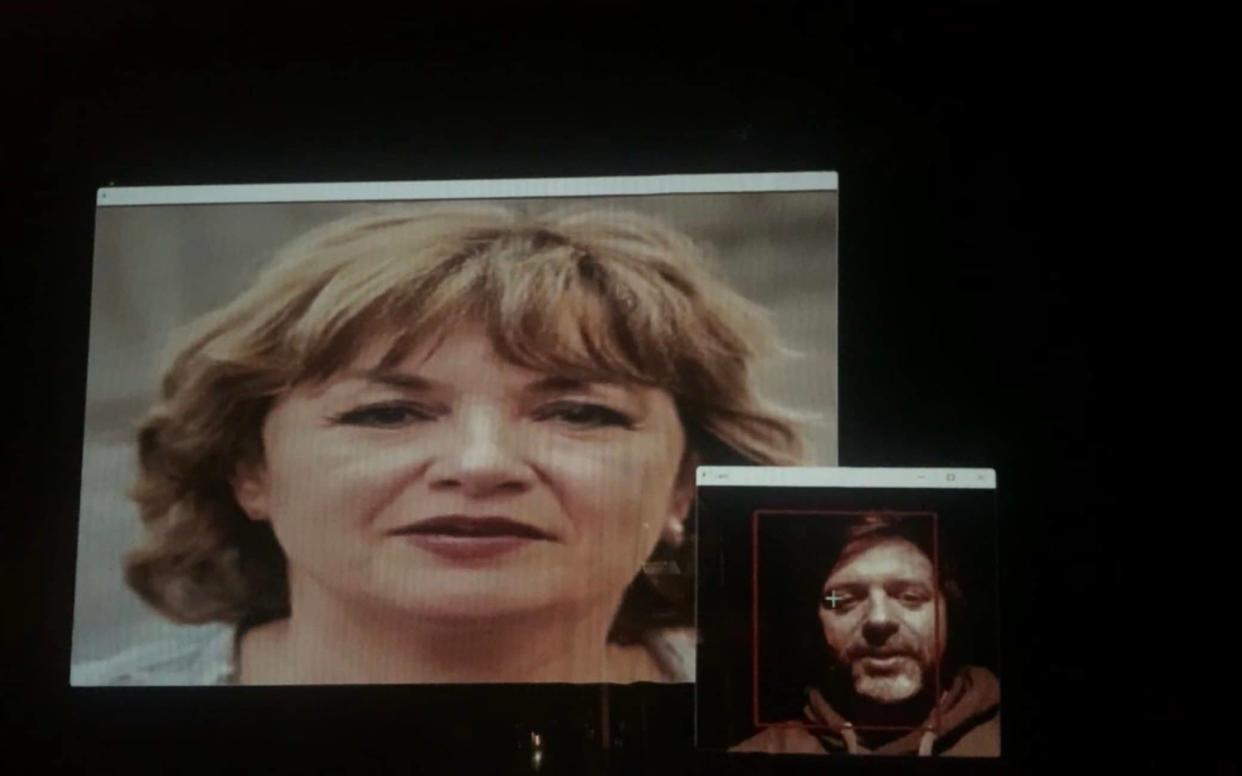Not One of These People: a triumph of deep-fakery? Yes, really

- Oops!Something went wrong.Please try again later.
Made up of 299 lines from 299 characters, Martin Crimp’s new work – which is premiering at the Carrefour international theatre festival in Québec City – is a work of exceptional ambition. A co-production between London’s Royal Court Theatre, Carte Blanche of Québec City and the Carrefour festival, the work’s challenge to itself is not only performative but also technological.
The performative challenge lies in Crimp speaking the lines of the entire legion of dramatis personae. The technological challenge comes in the piece’s extensive use of the computerised visual imagery known as “deep fake”.
Directed by Québécois dramatist Christian Lapointe, Not One of These People is an up-to-the-minute address to questions of representation, diversity and identity politics. From the very outset – when we see a procession of projected human faces, each of which is being attributed words spoken by the unseen Crimp – the piece is the very quintessence of cultural plethora.
From the transgender woman articulating her frustration with many feminists’ critique of her notion of femininity, to the woman speaking, shockingly, about her young child’s accidental suicide using a gun he found in the family home, Crimp’s text is phenomenally diverse, impressively erudite and, occasionally, laugh-out-loud humorous. The work is composed, like a piece of music, of long and short phrases, and of variations on themes.
In a series of short confessions, for example, a broad-ranging group of characters – who vary in terms of gender, ethnicity, sexual orientation and age – each begins their short monologue with the words “I’m sorry that”. Such brief offerings contrast markedly with the numerous short stories, such as one woman’s tale about an exhibition of a German painter (Gerhard Richter) whose name she has forgotten and whose paintings of members of the Baader-Meinhof Gang disturbed her deeply.
A short way into the piece, Crimp emerges from behind the screen, speaking the lines under a light stage-right, while he seemingly swipes from one image to the next on a tablet computer. As he does so, the images begin to animate slightly. One character closes her eyes, another curls his lip. Before we know it, the on-screen figures are being lip-synched, seemingly speaking simultaneously with Crimp.
The moment, late in the piece, when Crimp swigs demonstratively from a water bottle, while his voiceover continues is, like so much in this production, a neat confluence of form and content. If “deep fake” imagery is, by its very nature, unreliable, so too is Crimp, both as author and performer.
The English dramatist’s fascination with current political discourse on identity and representation might lead some to reach for that ubiquitous, reductive epithet “woke”. However, a serious consideration of the piece – complete with its disengaged, non-judgemental tone – shows it to be much more complex than that. For instance, a black character – standing in for the great gay African-American writer James Baldwin – problematises much of the discourse over “cultural appropriation”. He notes that, in his novel Giovanni’s Room, he wrote from the culturally distinct perspective of a young, white, gay man in Paris.
The piece ultimately combines the deep fake animations and, now, recorded speech with Crimp performing himself, seemingly in his home, writing yet more miniature monologues. As, newly written lines in hand, he comes centre stage, the irony of this socially diverse mass of characters being represented, vocally, by a 66-year-old, white Englishman is brought to the fore.
Curiously – given the show’s obvious technological achievement – the text is more compelling than the high-tech imagery. In the end, Crimp appears like Lucky from Beckett’s Waiting for Godot, a great torrent of humanity pouring from his mouth, but this time at much greater length.
Ends June 3; carrefourtheatre.qc.ca

